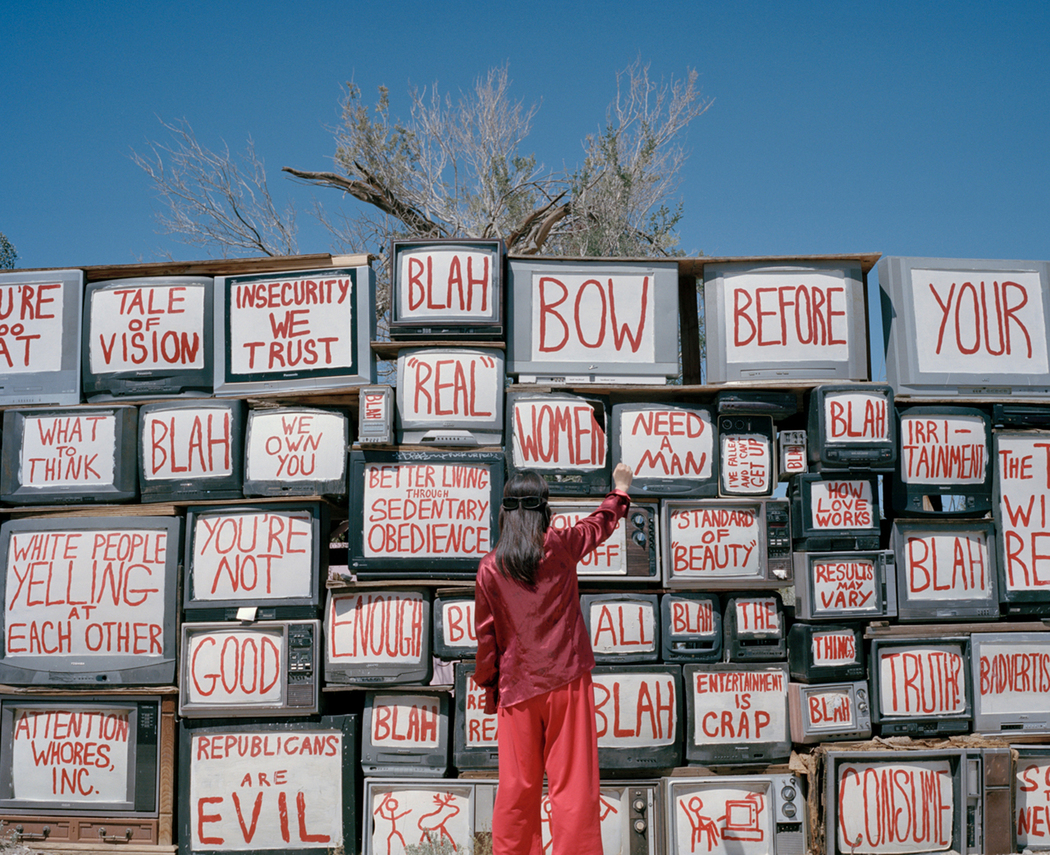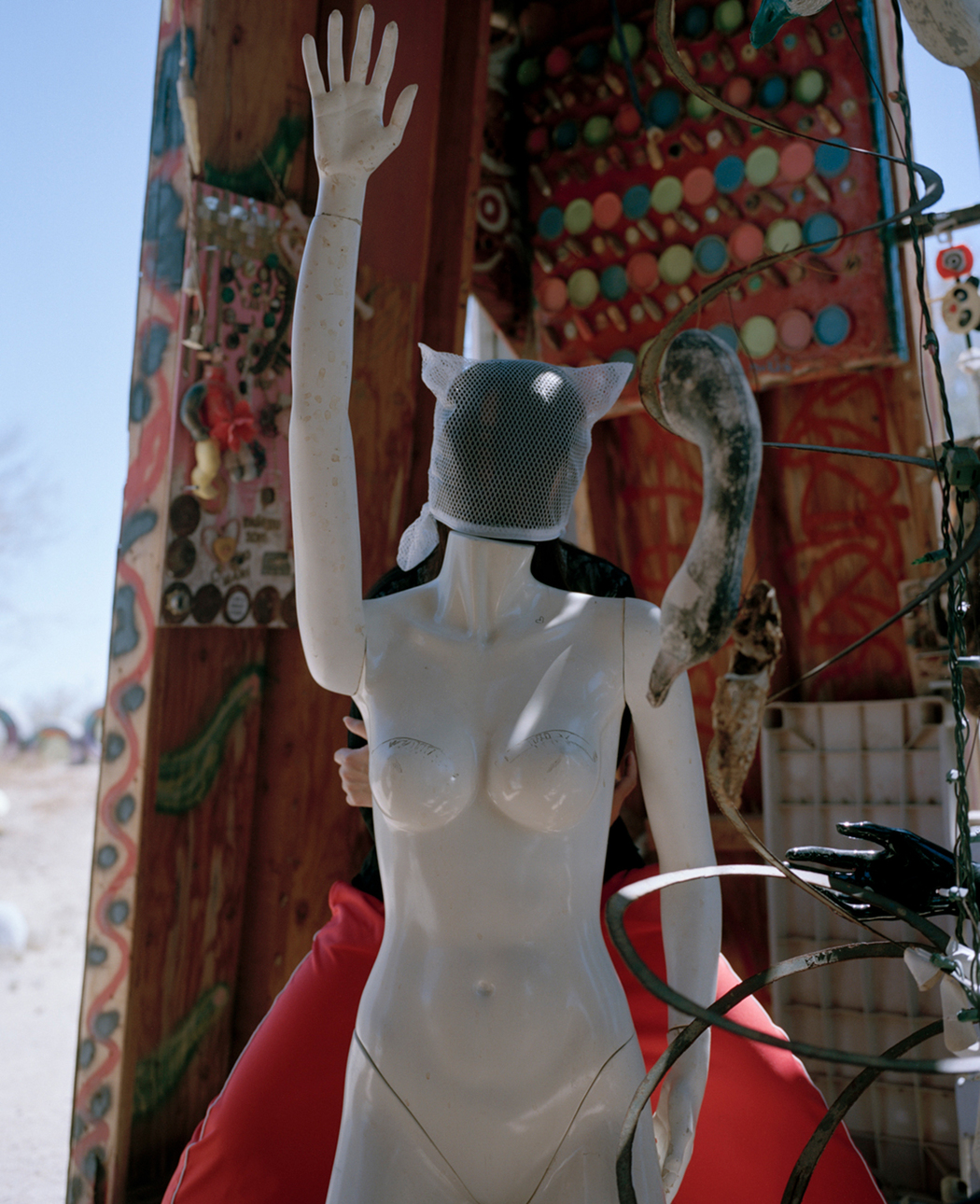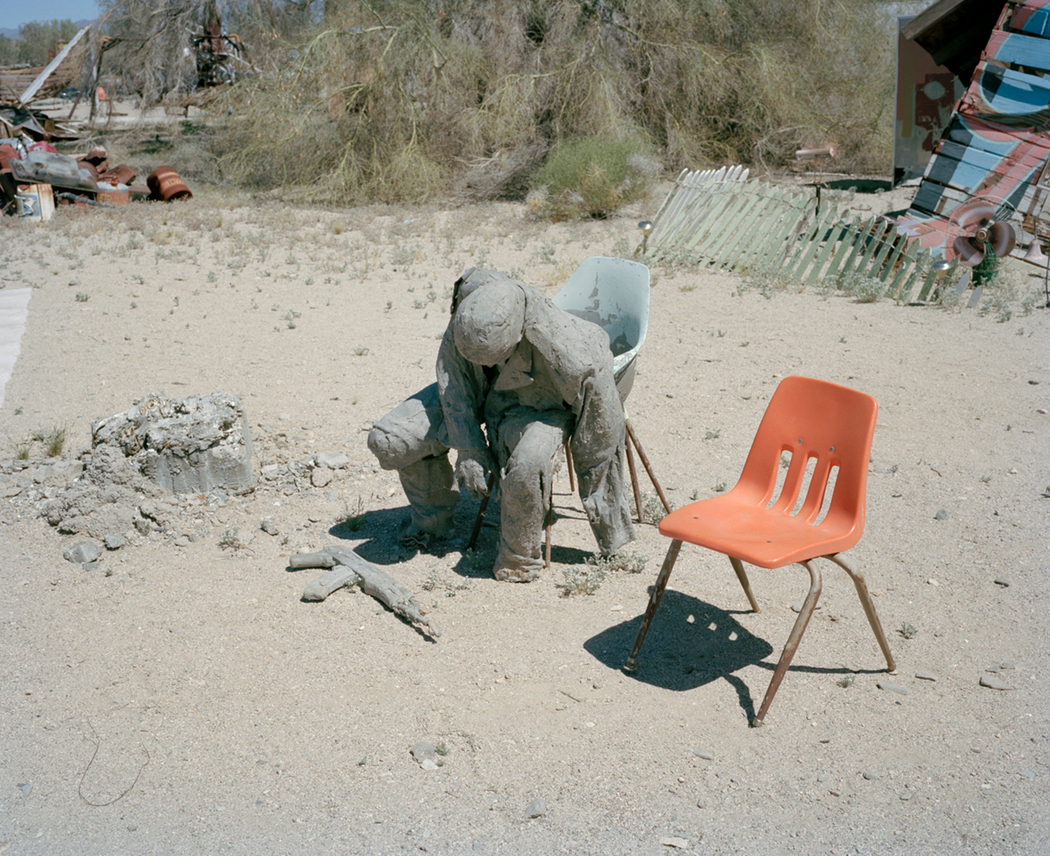Vivian W.
Your work blends narrative and fine art photography in a way that evokes both the real and the surreal. How do you approach balancing these two aspects in your compositions?
I see reality and fantasy as two sides of the same coin, constantly informing each other. My approach involves carefully constructing scenes that feel both familiar and uncanny, using elements of performance, costume, and unexpected juxtapositions within the natural world. The desert, with its stark expanses and shifting light, provides a real, tactile setting, while elements of performance, costume, and carefully placed objects introduce a dreamlike quality. I want my images to feel like glimpses into a world that is familiar yet slightly askew—recognizable, but not entirely of this reality.
 Vivian W. | On Fantasy
Vivian W. | On Fantasy
In your project On Fantasy, the desert landscape plays a significant role. Can you describe your relationship with this environment and why you chose it as the setting for your work?
The desert has been a backdrop to my life for as long as I can remember. I’ve driven through these terrains since I was young. I have a deep appreciation for its strange beauty and its ability to evoke both isolation and wonder. I was drawn to it as the setting for On Fantasy because of its naturally surreal qualities—it’s a space that already feels otherworldly. By using it as a stage, I wanted to amplify that sense of liminality, where time and reality seem suspended.
The idea of blending fantasy with reality is a core theme in your photography. How do you see the role of imagination in shaping our perception of the world?
Imagination is essential to how we interpret the world—it allows us to see beyond the literal and find deeper meaning in our surroundings. In my work, I use fantasy not as an escape but as a lens through which to reexamine reality. By layering dreamlike elements onto natural landscapes, I hope to encourage viewers to see the world around them with fresh eyes, to consider the ways in which perception is shaped by memory, myth, and personal experience.
 Vivian W. | On Fantasy
Vivian W. | On Fantasy
Victorian tableaux vivants have influenced your work. How do you reinterpret this historical art form in your modern photographic practice?
Tableaux vivants were originally about theatrical storytelling—scenes frozen in time, rich with symbolism. I draw from that tradition but reinterpret it in a contemporary context, using photography to craft moments that feel simultaneously staged and spontaneous. Rather than recreating historical narratives, I focus on evoking emotion and mystery, constructing images that leave space for interpretation. The performances in my work are not rigidly choreographed but exist in a liminal space between reality and performance, where the body, the landscape, and the atmosphere interact in unpredictable ways.
Your work seems to push the boundaries of traditional staged photography. What challenges do you face when attempting to create a contemporary version of this genre?
One of the biggest challenges is maintaining a balance between intentionality and spontaneity. Staged photography requires careful planning, but I also want my images to retain a sense of organic mystery. There’s always the risk of something feeling too constructed or overly polished, so I work to preserve an element of unpredictability—whether that’s through the natural light shifting unexpectedly or the way a performer moves within the space. Another challenge is redefining what “staged photography” can be in a time when digital manipulation is so prevalent. I strive to keep my work tactile and immersive, relying on in-camera effects rather than post-production to create a sense of presence and authenticity.
 Vivian W. | On Fantasy
Vivian W. | On Fantasy
Your photographs often evoke a sense of the uncanny. How do you cultivate that sense in your work, and what do you hope viewers take away from it?
I think the uncanny emerges when something feels both deeply familiar and strangely foreign at the same time. I cultivate this by introducing small ruptures in an otherwise recognizable scene: a figure standing in an unnatural stillness, an object out of place, a sense of tension between the subject and the landscape. Sometimes this comes from lighting choices, an unusual gesture, or an interaction between the subject and the environment that feels slightly “off.” I hope that viewers experience a moment of disorientation, where they question what they are seeing and, in doing so, engage more deeply with the image.
In a world where images are consumed quickly, your work encourages contemplation. How do you hope your photography stands apart from the fast-paced nature of contemporary visual culture?
In a time when images are often scrolled past in seconds, I want my work to feel like an invitation to pause. I embrace ambiguity and layered storytelling, inviting viewers to spend time with each image, to look closely, to feel rather than simply see. Photography today is often ephemeral, quickly replaced by the next image in a feed. I hope my work lingers in the mind, offering an experience that is immersive and lasting rather than fleeting.

Leave a Reply